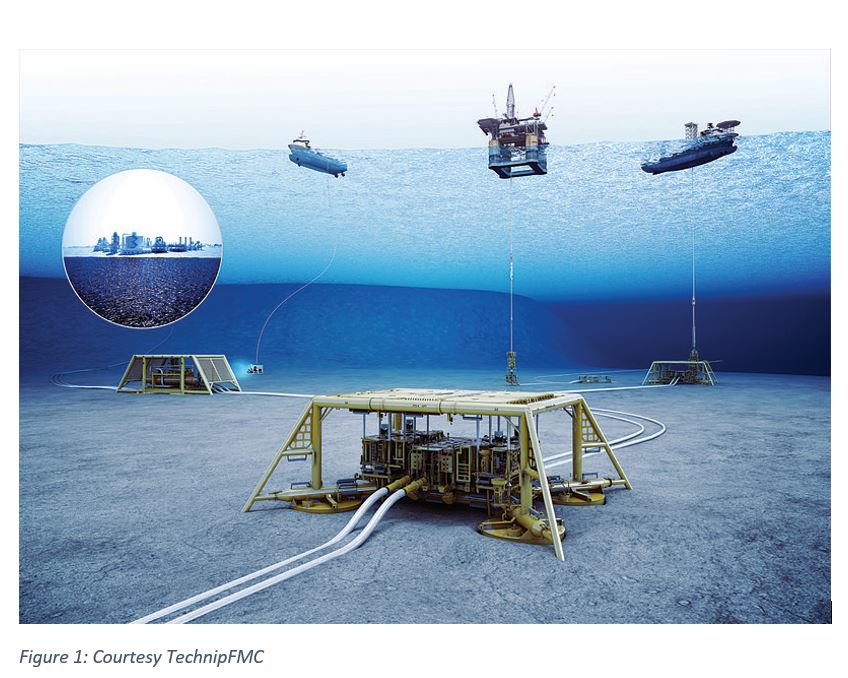

Since the beginning of 2020, the world has been rocked by the adverse impact of the COVID-19 pandemic, and the oil & gas industry was hit especially hard as demand waned. The global pandemic notwithstanding, the development of subsea controls has been based on a step by step development over the years, adding more and more functionalities to the various systems. Today, tremendous technology developments are ongoing, driven by the goal of placing processing systems on the seabed.
The increase in complexity is extensive compared to the early beginning with North East Frigg some 30 years ago towards the subsea compression facilities that are currently being realized. There has been a development in technological areas, such as design, materials, flow assurance, control and instrumentation, installation, and operation. The driving force has been to develop simpler and more cost-efficient ways to produce, process, and transport oil and gas offshore.
Over the years, subsea processing has been mentioned as the future of oil and gas production. The motivation for subsea processing has changed, from reducing topside weight to being an enabler for late life production, until today when subsea process facilities are being installed on greenfield developments. Increasing the estimated ultimate recovery is a key driver. To achieve this, the industry is relying more and more on utilizing subsea systems as part of this value creation, and the subsea part of a field development is getting more advanced. The number of installed subsea X-mas Trees today is about 800 on the Norwegian Continental Shelf, and approximately 5,000 on a worldwide basis. These numbers are forecasted to increase in the years to come, both with known technology and more complex developments utilizing new technology.
Today’s subsea production systems tend to go deeper, have reservoirs with higher temperature and pressure, be in fields located in regions with a colder climates (artic), include installation of subsea processing equipment (demand for more power), and are at longer distances from infrastructure. Traditional production control systems monitor processes with relatively slow process dynamics. Condition and performance monitoring systems may, in many cases, be monitoring systems with much faster dynamics. This may require improved instruments and data sampling systems. The amount of data being transmitted from a subsea installation may also increase considerably. There is a risk that introducing new equipment and an increase in data will introduce faults into the control system. It will be important to ensure adequate independence between critical control/safety functions and monitoring functions, so the reliability of the critical functions is not compromised.

Depending on the project requirements, the topside control units can be integrated by adding the pump control to an existing production control system, or vice versa. For new projects, a full integration can be achieved from topside to subsea, from system to board level. These full integrations can utilize common building blocks from the same subsea control module (SCM) product family. Core components from existing technologies have been thoroughly evaluated and selected to form the basis for the new pump SCM. New, single-unit, integrated SCMs expand the range of available SCMs. The integration also facilitates the use of online life-of-field services for pump and production controls. Users demand lower costs, increased standardization, and greater efficiency in subsea operations if they are going to continue to make investments in subsea controls and suppliers respond accordingly. Subsea to topside interface has been developed by integrating distributed control systems (DCS) to subsea system – master control stations (MCS)/Gateway – through OPC UA, and such initiatives have helped improve interoperability.
Recent ARC research into the market for Subsea Controls: A Migration Path to The Future, includes systems such as Master Control Stations (MCS), Subsea Power & Communication Units (SPCU), Hydraulic Power Unit (HPU), Subsea or Topside Termination Umbilical Assembly, Subsea Control Modules (SCM), Sensors & Electrical Distribution Equipment, etc. for applications, such as Subsea Production, Processing & Compression, Installation & Workover.
ARC welcomes the opportunity to speak with technology suppliers and users about their activities, thoughts, perspectives, and questions on this exciting area. For further discussion or to provide feedback on this blogpost, please contact the author, Tim Shea, at tshea@arcweb.com .

